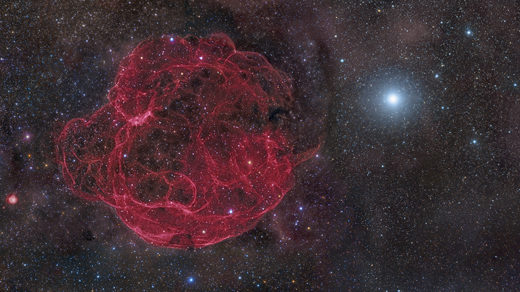Throughout history, the Earth has witnessed cataclysmic events that have shaped its ecosystems and altered the course of life. Recent research suggests a compelling connection between nearby stellar explosions and the extinction of large animals. This groundbreaking study delves into the profound implications of celestial detonations in close proximity to our planet.
An Unprecedented Threat from Above
Intriguingly, this investigation sheds light on how astronomical phenomena can trigger catastrophic consequences for terrestrial organisms. By examining geological records and analyzing isotopic compositions, scientists have uncovered evidence suggesting that supernovae or gamma-ray bursts occurring within a certain range could unleash an onslaught of lethal radiation upon Earth’s inhabitants.
These cosmic events emit intense energy in various forms, including high-energy particles and deadly radiation waves. When such an explosion occurs relatively near our planet, these hazardous emissions can penetrate our atmosphere with devastating effects. The ensuing cascade of ionizing radiation poses a grave threat to large animals that are unable to seek shelter or mitigate their exposure effectively.
A Silent Annihilation
The repercussions of proximal celestial detonations extend far beyond immediate casualties. As this study reveals, even if megafauna were not directly exposed to lethal doses of radiation during these events, they would still suffer dire consequences due to long-term ecological disruptions.
Large herbivores at the top of food chains play pivotal roles in maintaining ecosystem balance by regulating vegetation growth through grazing activities. However, when subjected to prolonged stress caused by celestial explosions’ aftermaths – such as reduced plant productivity and increased atmospheric pollution – these vital species face significant challenges for survival.
This research underscores how seemingly distant cosmic occurrences can silently dismantle intricate ecological networks over time. The loss or decline of megafauna populations can trigger a domino effect, leading to imbalances in predator-prey relationships and altering the distribution of plant species. Ultimately, this disruption jeopardizes the stability and resilience of entire ecosystems.
A Call for Vigilance
Understanding the potential impact of nearby stellar explosions on large animals is not merely an academic pursuit; it carries profound implications for our planet’s future. By recognizing these threats, we can take proactive measures to safeguard vulnerable species and preserve biodiversity.
Efforts must be made to monitor celestial events more closely, enabling early detection systems that provide timely warnings about impending cosmic detonations. Additionally, further research should focus on developing strategies to mitigate the ecological consequences caused by such cataclysmic events.
In Conclusion
The correlation between proximal celestial detonations and the extinction of large animals presents a sobering realization: even phenomena occurring light-years away can have far-reaching repercussions on Earth’s delicate ecosystems. This study serves as a clarion call for increased vigilance in monitoring astronomical events and underscores the urgent need for comprehensive conservation efforts aimed at protecting our planet’s diverse array of life forms from both terrestrial and extraterrestrial threats.
